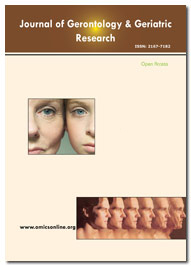Indexed In
- Open J Gate
- Genamics JournalSeek
- SafetyLit
- RefSeek
- Hamdard University
- EBSCO A-Z
- OCLC- WorldCat
- Publons
- Geneva Foundation for Medical Education and Research
- Euro Pub
- Google Scholar
Useful Links
Share This Page
Journal Flyer

Open Access Journals
- Agri and Aquaculture
- Biochemistry
- Bioinformatics & Systems Biology
- Business & Management
- Chemistry
- Clinical Sciences
- Engineering
- Food & Nutrition
- General Science
- Genetics & Molecular Biology
- Immunology & Microbiology
- Medical Sciences
- Neuroscience & Psychology
- Nursing & Health Care
- Pharmaceutical Sciences
Abstract
High Prevalence of Vitamin D Deficiency in Irish Patients with Hip Fracture
Browne JG, Healy M, Maher N, Casey MC and Walsh JB
Background: Vitamin D is well recognized to be suboptimal in older patients and patients with fragility fractures are more likely to have lower serum vitamin D levels when compared to age-matched controls. Vitamin D deficiency is considered to be a serum level of 25-hydroxyvitamin D [25(OH)D] <50 nmol/L and a serum level >75 nmol/L is considered to be an optimal level. While international studies have demonstrated a high prevalence of vitamin D deficiency in patients who have sustained a hip fracture, there are no published studies on the prevalence of vitamin D deficiency in Irish patients who have fractured their hips.
Aim: To investigate the prevalance of vitamin D deficiency in consecutive patients admitted with hip fracture to a large Dublin Teaching Hospital.
Methods: A prospective study over 12 months of all patients with a hip fracture admitted to a Dublin teaching hospital with measurements of serum bone biochemistry, 25-hydroxyvitamin D and parathyroid hormone levels.
Results: 156 patients admitted with an acute hip fracture were assessed over a 12 month period. 115 (67.3%) patients were vitamin D deficient (<50 nmol/L), with 14 (9%) patients having an optimal vitamin D level (>75 nmol/L). 27 (17.3%) patients were on vitamin D supplementation at the time of fracture with 10 (37%) still vitamin D deficient and only 8 (29.6%) of the supplemented patients having an optimal vitamin D level with no significant seasonal variation. Approximately one quarter of patients with vitamin D deficiency (<50 nmol/L) demonstrated secondary hyperparathyroidism.
Conclusions: This study confirms that there is a very high prevalence of vitamin D deficiency in Irish patients admitted to hospital with a hip fracture. Very few patients had optimal serum levels of vitamin D. Patients admitted on standard recommended vitamin D supplementation had higher mean serum vitamin D levels compared to nonsupplemented patients but over a third were still vitamin D deficient and less than a third had an optimal level at the time of the fracture.

